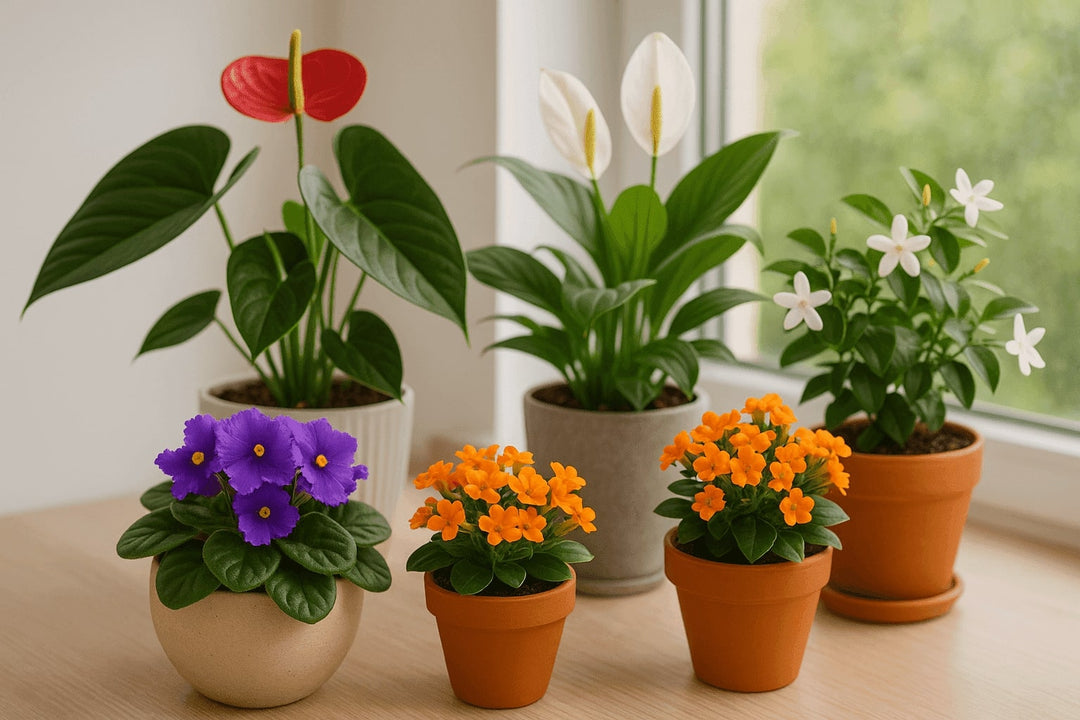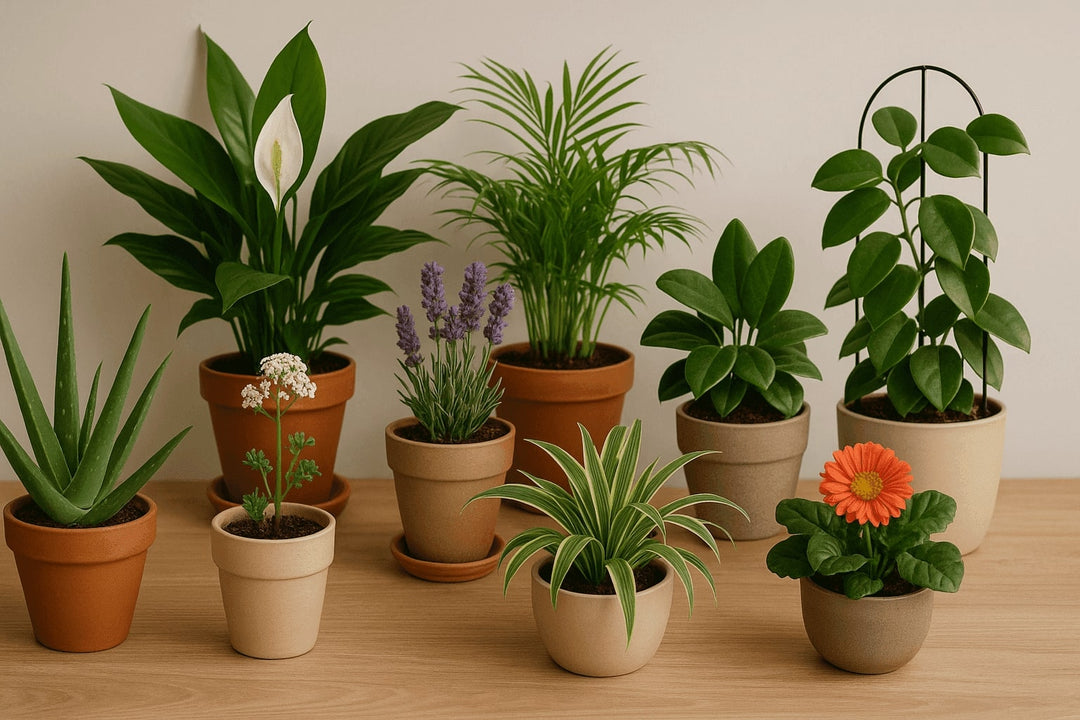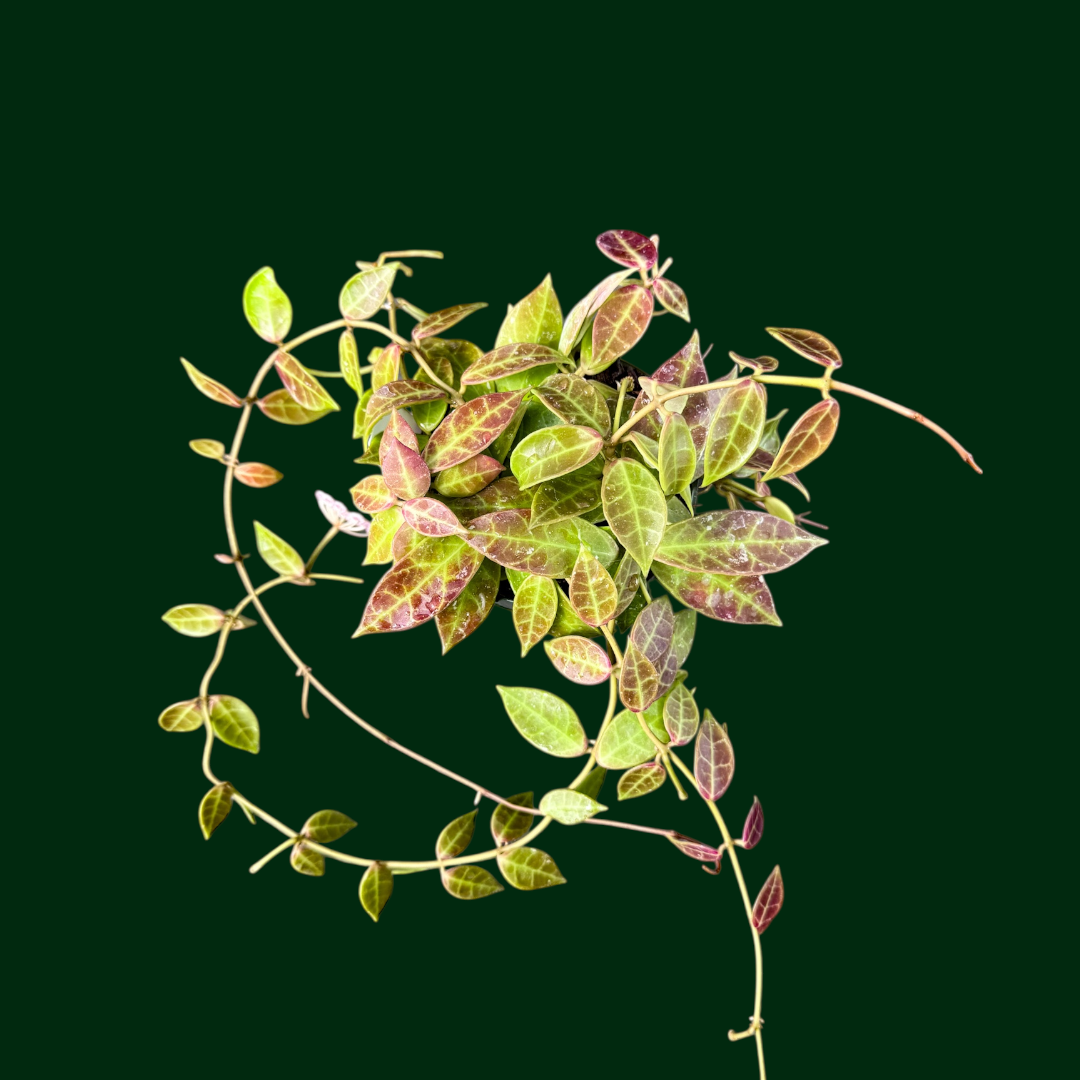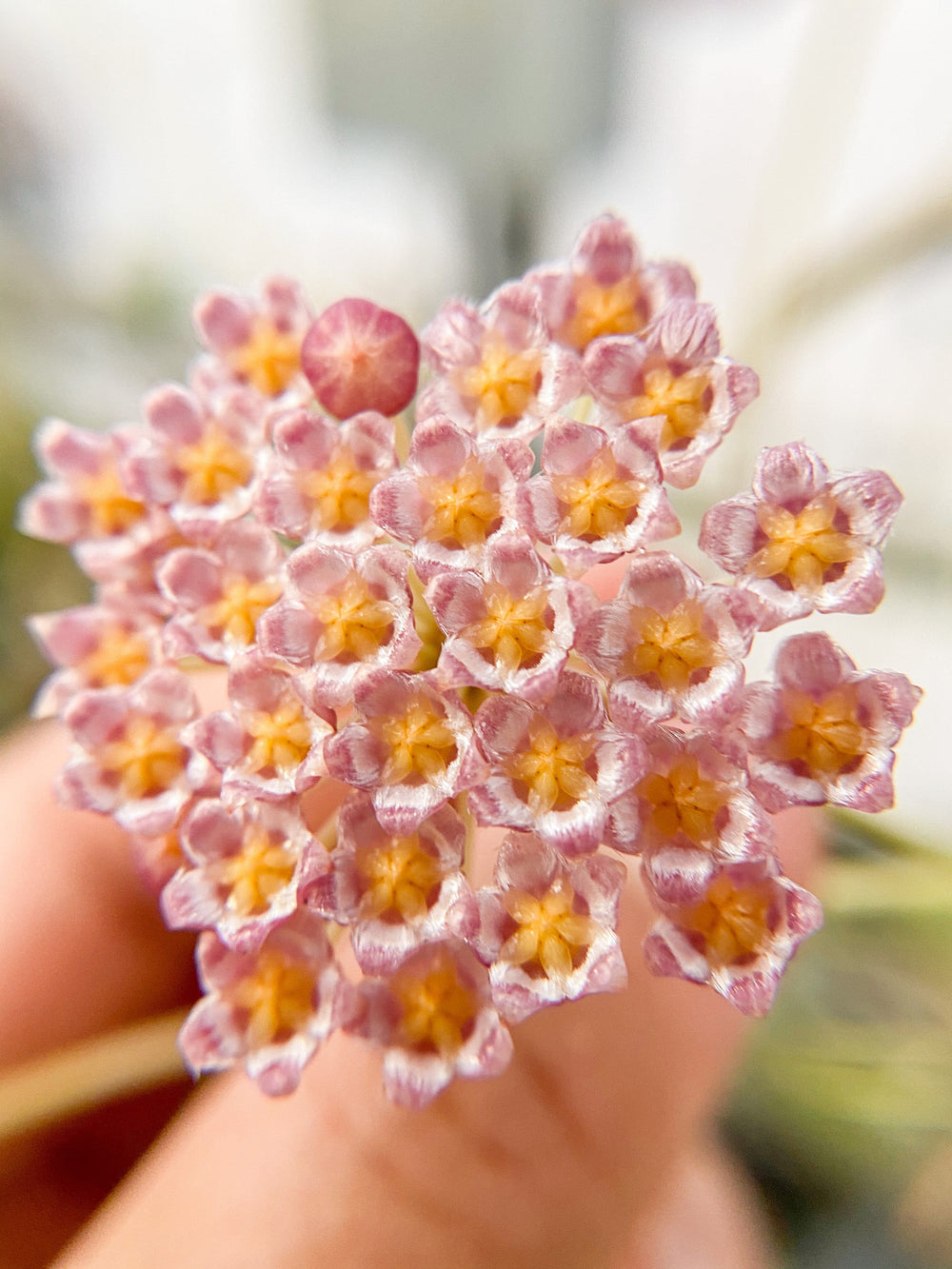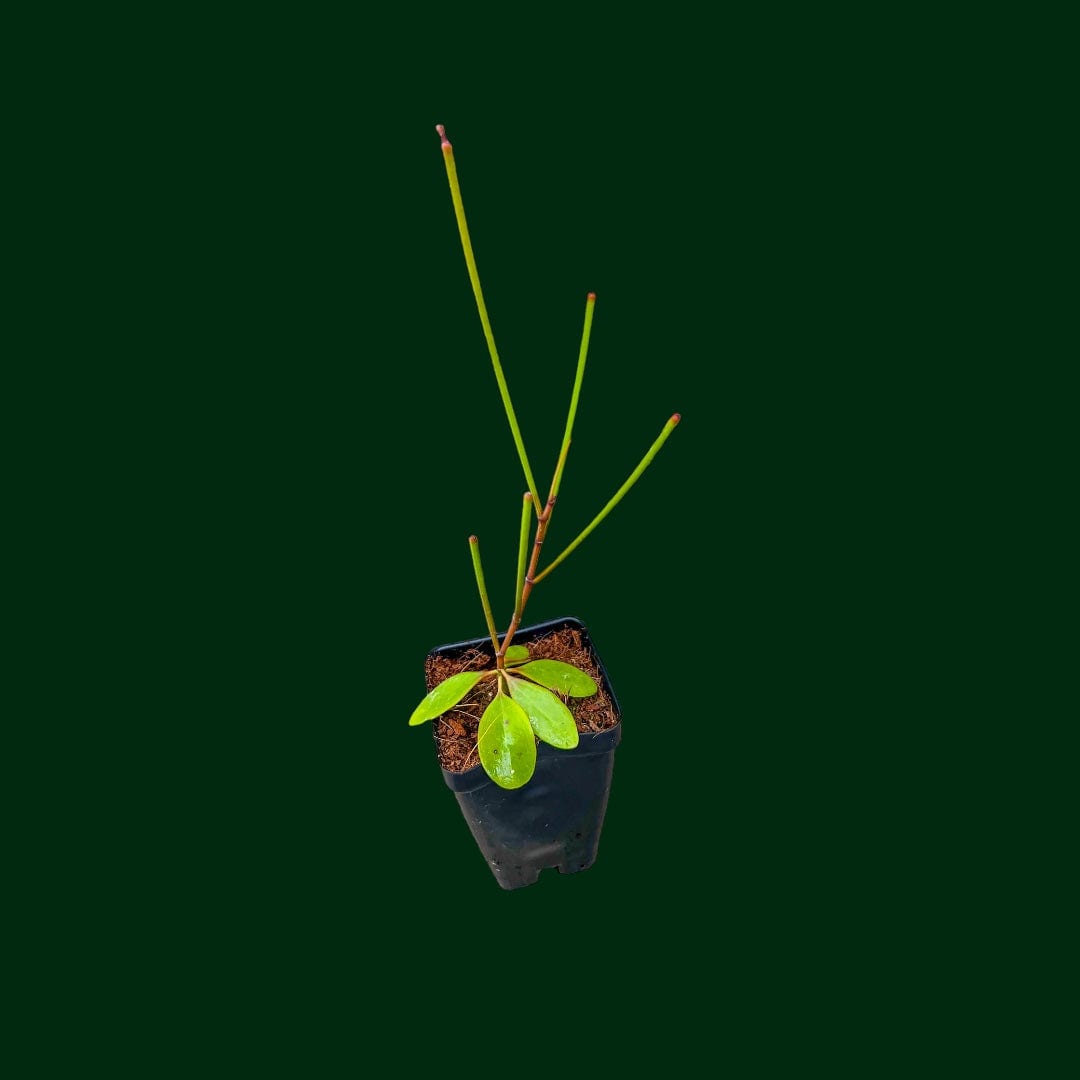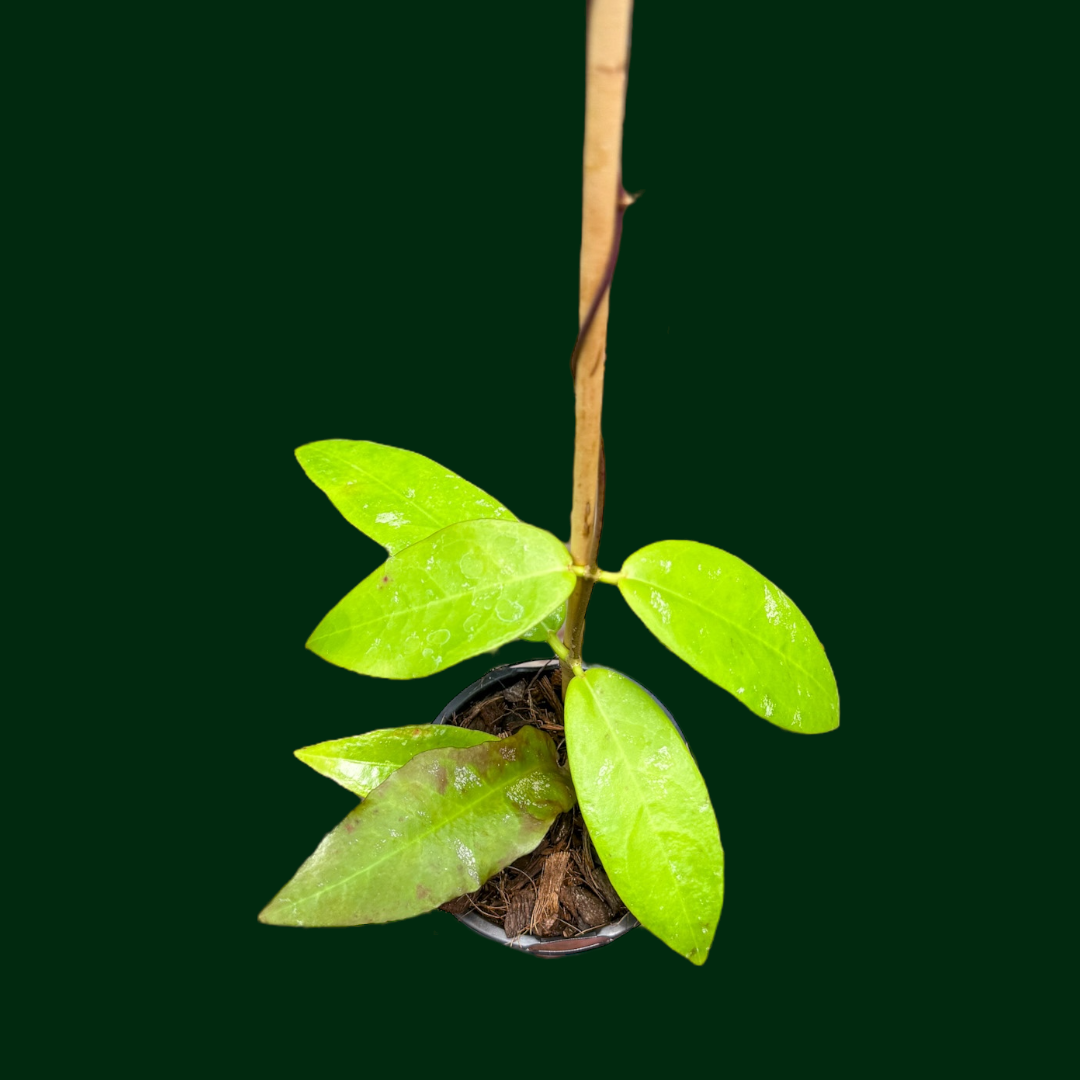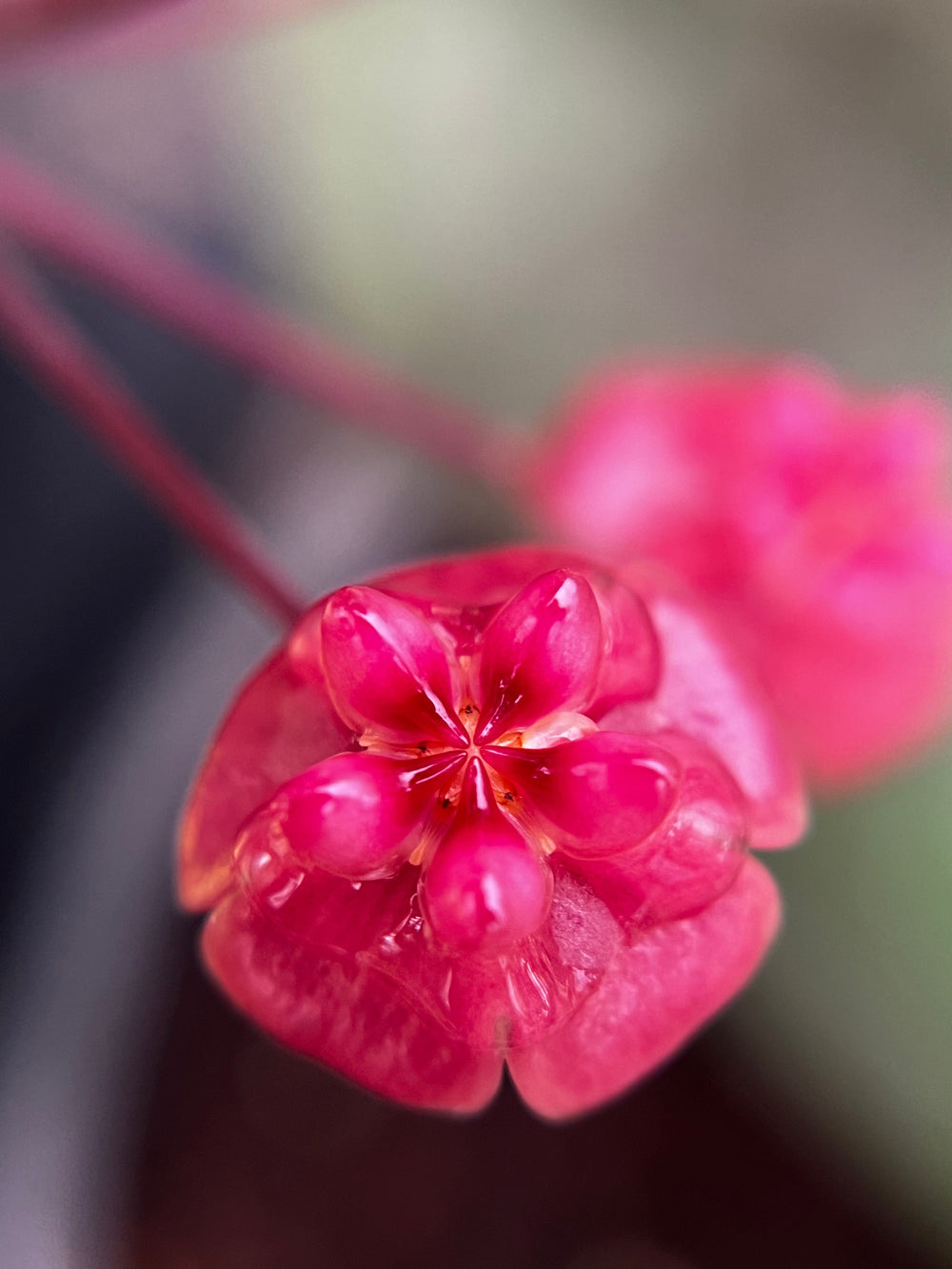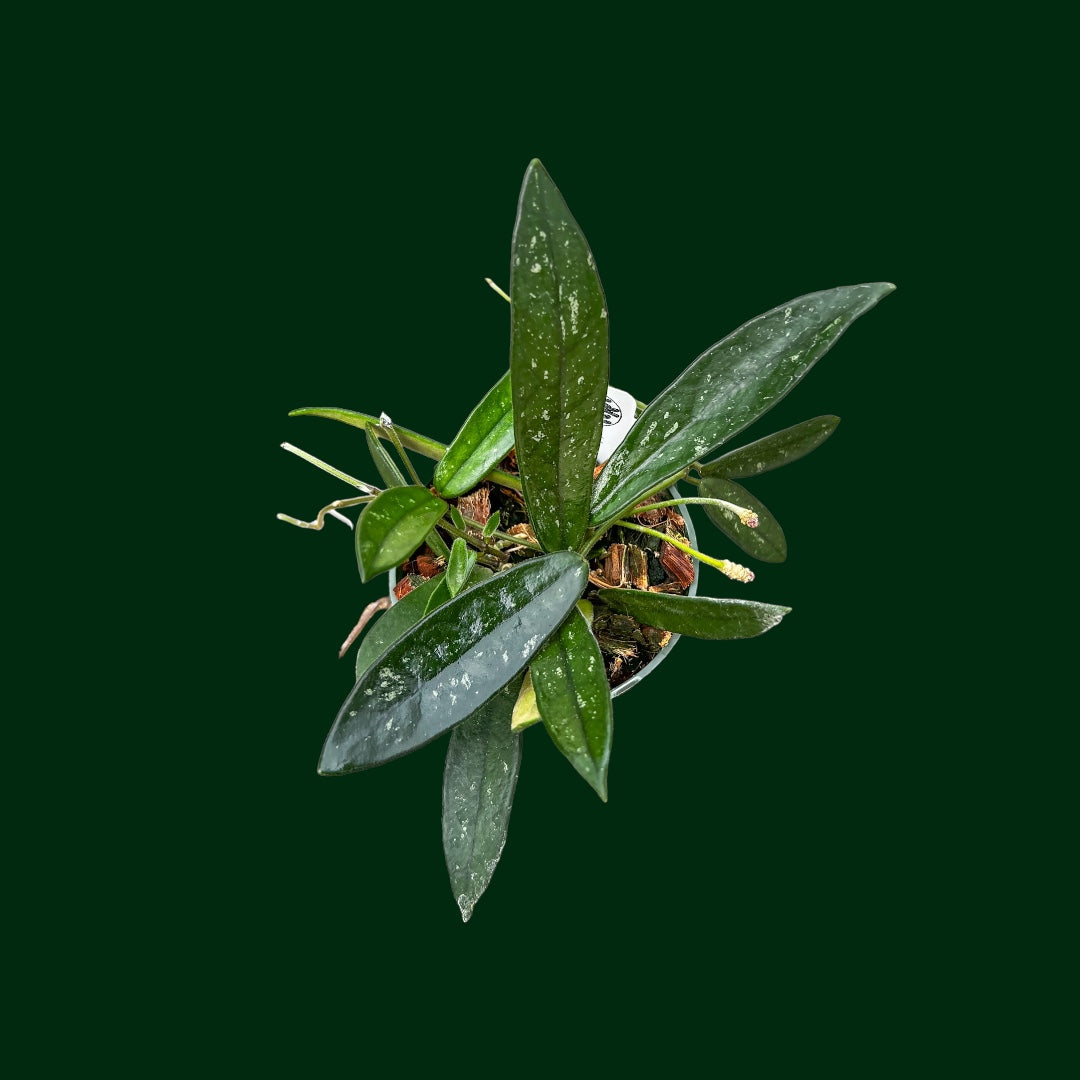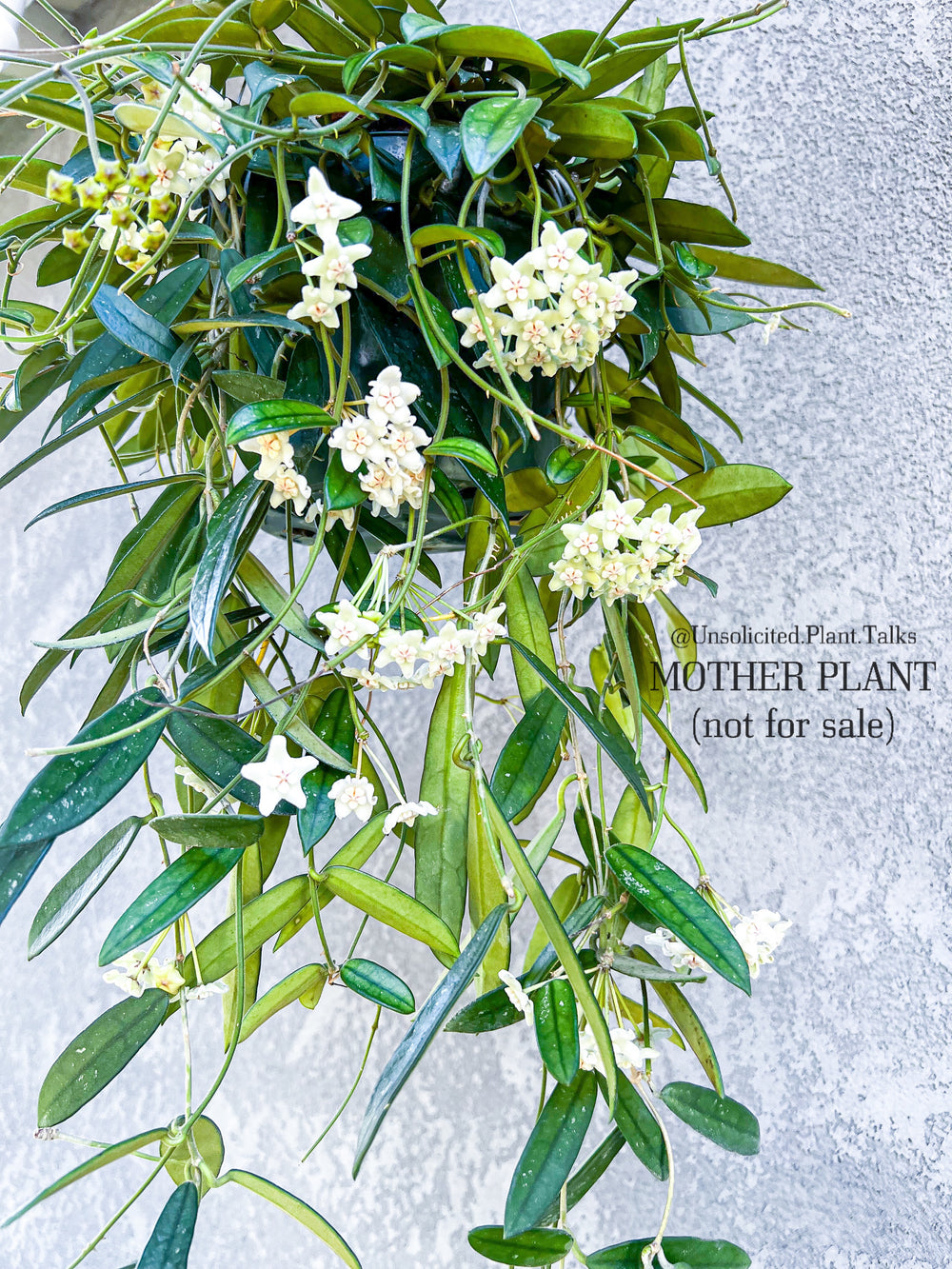Types of Hoya Plants – Your Guide Through Different Hoya Varieties
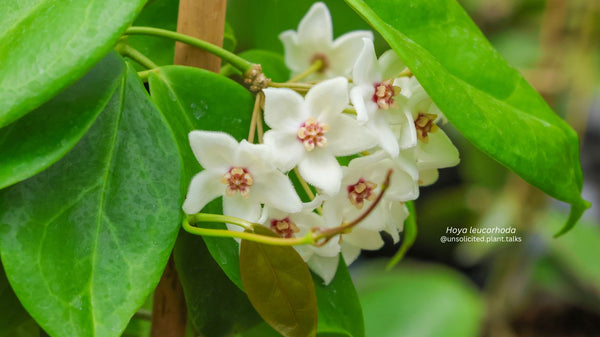
Table of Contents
- Hoya carnosa
- Hoya australis
- Hoya kerrii
- Hoya obovata
- Hoya pubicalyx
- Hoya latifolia (Sarawak)
- Hoya curtisii
- Hoya sp. aff. burtoniae
- Hoya imperialis
- Hoya linearis
- Hoya wayetii
- Types of Hoya Plants – Wrap-Up
There are more than 500 discovered Hoya species around the globe. These tropical plants garnered the appreciation of many home plant enthusiasts for their easy upkeep, beautiful colorization, leaf patterns, trailing vines, and stunning flowers.
It’s easy to see why so many of you are interested in uncovering all the secrets of the Hoya world.
And what better way to start than by getting to know various types of Hoya plant species? This is precisely why we’re here today!
In this blog post, we’ll focus on the most breathtaking, rare, and also quite common Hoya plant varieties, giving you a good scoop on what you can find in the tropical garden of Hoyas.
Hoya carnosa

A good entry point for our journey through the fragrant world of Hoyas is Hoya carnosa, one of the most popular and adored species in house plant lovers' circles.
Native to Eastern Asia and Australia, this type of Hoya is celebrated for its thick, waxy leaves, often producing light pink, star-shaped flowers that vary from near-white to dark pink.
Hoya carnosa flowers appear in clusters and can be characterized by their waxy or porcelain appearance. The plants of this variety usually bloom from spring to late summer, with the flowers maturing gradually over 2 to 3 weeks.
Some of the most beautiful Hoya carnosa species include Hoya carnosa 'Nova Ghost', Hoya 'Krinkle 8', and Hoya Carnosa ‘Wilbur Graves’.
Hoya australis

The most popular of all Australian Hoyas is Hoya australis, a very adaptable and fairly easy-to-grow plant that can reach an impressive 32 feet in length. This Hoya produces succulent, elliptical, or ovate leaves, varying in color from yellowish-green to dark green.
Its flowers are particularly enticing, with a strong, sweet fragrance that enamors many Hoya enthusiasts. Hoya australis’ flowers are white with deep red markings in the center, typically blooming from late spring to summer. They appear in clusters on long pedicels and are about 0,8 inches in diameter.
As said earlier, this species is pretty easy to grow, with medium to high humidity requirements. It prefers well-lit environments but can also survive in heavy shade.
Some mention-worthy Hoya australis subspecies include Hoya australis sana, Hoya australis rupicola, and Hoya australis oramicola.
Hoya kerrii

Hoya kerrii, also known as the "Sweetheart Hoya" or "Hoya Hearts," is definitely on the list of the most unique and charming Hoyas you can find. All because of the very recognizable heart-shaped leaves this species grows.
Native to Southeast Asia, plants in this category are very popular, especially around Valentine’s Day (it’s easy to see why). Hoya kerrii can reach up to more than 13 feet in height. Its leaves are its most distinctive feature. They are often solid green or variegated.
Hoya kerrii’s flowers are white with red centers, typically blooming around early summer. These flowers are known for producing a significant amount of nectar.
Hoya obovata

Hoya obovata is similar to Hoya kerrii in the way it grows and in the shape of its leaves. The most important difference between the two species stems from the fact that Hoya obovata’s leaves are more oval and less heart-shaped. However, plants from this species are still widely liked among Hoyas enthusiasts.
Hoya obovata is native to various regions in Asia, including Fiji, India, Indonesia, and Thailand. It can usually reach 10 to 12 feet in length. When in bloom, the plant produces lovely clusters of star-shaped flowers with fuchsia flowers on a background of larger, waxy white petals. Some say they resemble cherry bakewells.
Hoya pubicalyx

Hoya pubicalyx comes to us straight from the Philippines. The plant is known for its long-growing vines that can easily reach up to 20 feet in length. For this reason, many people choose Hoya pubicalyx to be one of their showpieces, adding a touch of tropical elegance to any indoor space.
These Hoyas sport beautiful foliage that is usually longer and thinner than what can be seen in Hoya carnosa (which it’s often confused with).
The leaves can feature speckles of silver-gray. Like most Hoyas, Hoya pubicalyx produces star-shaped flowers in clusters, which, depending on a particular subspecies, can come in a variety of colors, including purple, pink, and black.
This plant likes medium to bright, indirect sunlight and high humidity levels, ideally around 60% or more.
Some cultivars you may want to consider are Hoya pubicalyx ‘Pink Ghost’, Hoya fungii x Hoya pubicalyx RHP, and Hoya pubicalyx Royal Hawaiian Purple.
Hoya latifolia (Sarawak)

This beautiful Hoya, known under the name dinner plate Hoya, makes an impression on most people. For one, its foliage is large and thick, ranging in coloration from green to maroon, with distinct palmate venation.
But that’s not all because what is perhaps the most exciting characteristic of Hoya latifolia are its flowers, which bloom in large amounts. They can range in color from lime green-yellow to light pink-purple, and the yellow variation especially makes these plants so special, as it’s not seen commonly in Hoyas.
Native to Singapore and other parts of Southeast Asia like Sundaland and Borneo, Hoya latifolia subspecies and cultivars are relatively easy to care for, offering a breathtaking appearance in return.
See Hoya latifolia Sarawak, Hoya latifolia (polystachya), and Hoya latifolia ‘Queensy for some interesting Hoya latifolia specimens available at our online store.
Hoya curtisii

Most types of Hoya plants are easy to take care of, and that is really the case for our next species - Hoya curtisii. These charming and dainty houseplants are native to Southeast Asia and can grow up to two to 20 inches tall.
The plant’s foliage is relatively small and delicate, in olive-green color, often with silver splashes. Usually, it may take 3 to 4 years for the plant to flower. They might require some patience and care at first, but Hoya curtisii is simply gorgeous and definitely worth the effort.
Plants from this species enjoy being slightly root-bound, so repotting isn't frequently needed. They thrive in bright, indirect light but should be kept out of direct sunlight.
Hoya sp. aff. burtoniae

Hoya sp. aff. burtoniae is native to the Philippines, and as one of the rare Hoya species, it garners some attention from Hoyas collectors. The plant is known for its almond-shaped, fuzzy leaves that can be really unique in their coloration (pale green and red and brown when the plant is sun stressed).
Hoya sp. aff. burtoniae is especially stunning when in bloom, gaining round, berry-like burgundy flowers that charm with their sweet honey, butterscotch, or caramel scent.
It takes a couple of years for the plant to mature, and during its lifespan, it can reach a height of up to 6 feet or more.
Like many other types of Hoya plants, this species also prefers well-lit environments; however, it’s better to keep them far from direct sunlight. They grow beautifully in moderate to warm temperatures and prefer humidity levels between 50% and 70%.
Hoya imperialis

@misscrazyplantlady on Instagram
One of the highly sought-after species in the Hoya genus, Hoya imperialis captivates plant lovers with its considerable size and absolutely stunning fragrant flowers. The name of this Hoya type is not random, as this species grows some of the largest flowers among all the Hoya species (each can reach the size of 3.3 - 4 inches wide).
Clusters of large, star-shaped flowers, typically pink or reddish in color, emit a strong, very pleasant scent, delighting both the eyes and noses of their owners.
Hoya imperialis usually achieves a pretty rapid growth rate, blooming beautifully in spring and summer. Their growth can slow down during winter months when they might need more attention and care.
Hoya linearis

Hoya linearis is native to the Himalayas, which makes it the first Hoya species in this guide that has its origins in a colder climate. That’s not the only thing that distinguishes this Hoya species.
The plant is easily recognizable thanks to its long trailing stems covered in skinny, cylindrical-shaped, and slightly hairy leaves. This Hoya type can grow up to 6 feet, offering an average to fast growth rate.
Hoya linearis is known to bloom in late summer, producing white flowers with a sweet lemon scent.
Hoya wayetii

Hoya wayetii is a well-liked and easy-to-grow plant. It’s characterized by its long and elongated leaves in captivating, deep green. The foliage can gain a red margin when the plant is exposed to sunstress.
The plant blooms in the early summer, sporting small clusters of mauve flowers. Being a tropical plant, Hoya wayetii thrives in high-humidity environments, ideally between 50% and 65%. It is prone to leaf drop when it’s in direct sunlight for long periods, but overall, this Hoya doesn’t pose a considerable challenge for dedicated house plant growers.
Some interesting varieties you may find in the Unsolicited Plant Talks collection include Hoya wayetii ‘Lori Lyn' and Hoya 'Rosita'.
Types of Hoya Plants – Wrap-Up
This is where we end our adventure in the world of Hoya types (at least for now). In this article, we talked about various Hoya species that are beloved and sought after around the world. Now you know that Hoyas are diverse, incredibly enchanting, and never boring.
And no matter if you’re looking for a compact plan for your office space or a large centerpiece for the living room, you can find both and more in different Hoya varieties.
Want to learn more about how to take care of your plants? Don’t hesitate to visit our Blog, where you’ll find crucial, in-depth information about how to ensure the best growth of different Hoya types.
See our amazing collection of Hoyas, which we’re proud to share with you. From popular, wide-spread species to truly rare ones, we’ve got the range that will help you discover all there is to love about Hoyas.



